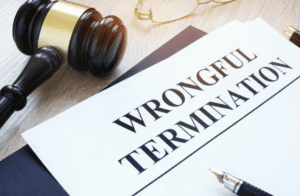
In 2019, the U.S. Equal Employment Opportunity Commission (EEOC) received more than 7,500 complaints of sexual harassment. The scary part is that this is just a fraction of the sexual harassment that takes place in work settings around the country.
When most of us think about sexual harassment, we think about a male employee making repeated unwanted sexual advances to a female employee. And while much of the sexual harassment that occurs in the workplace consists of these situations, many do not. In fact, 16.8% of all sexual harassment complaints received by the EEOC were filed by male employees.
So what kind of conduct constitutes sexual harassment? The answer to that question depends on what the law says. And the leading statute that addresses sexual harassment in the employment setting is Title VII of the Civil Rights Act of 1964 (Title VII).
What Title VII Says About Sexual Harassment
On its face, Title VII doesn’t prohibit sexual harassment at work. Specifically, Title VII prohibits discrimination on the basis of religion, color, national origin, race and sex. Only after more than two decades had passed since Title VII was enacted, would courts finally recognize that sexual harassment constituted prohibited sex discrimination under Title VII.
In 1986, the Supreme Court concluded in a 9-0 decision that sexual harassment constituted unlawful sex discrimination under Title VII. This case was Meritor Savings Bank v. Vinson and would lead the way for other courts to further define sexual harassment in the workplace, both under Title VII and other applicable state laws.
Sometimes state laws apply because Title VII only applies to employers with 15 or more employees. In smaller businesses, the victim of sexual harassment may need to rely on a state or even local law. But in most sexual harassment cases, it’s Title VII that comes into play.
Sexual Harassment Defined
Under Title VII, sexual harassment consists of unwelcome conduct of a sexual nature that: affects the victim’s employment, unreasonably interferes with the victim’s ability to work or creates a hostile work environment.
To better understand what sexual harassment is, we need to dig deeper into each of the bolded portions of this definition.
Unwelcome Conduct
Lawmakers and courts understand that workers will interact with each other in ways that involve sexual attraction or factor in someone’s sex. For example, employees might tell a sexist joke or ask a coworker out on a date.
The recipient of this joke or date request could have any number of reactions. Therefore, courts know that verbal or physical conduct among employees can be:
- Invited
- Uninvited, but appreciated
- Offensive, but tolerated
- Outright rejected
Not all of these behaviors will constitute sexual harassment and it’s sometimes hard to decide how to classify a particular behavior. Then there’s the added variable of how often this behavior occurs and the type of conduct that takes place.
Generally speaking, conduct is unwelcome if the victim does not solicit it and the victim views the conduct as offensive or undesirable.
Sexual Nature
Despite its name, sexual harassment does not need to be sexual or motivated by sexual desire or attraction. As long as the harassment is based on the victim’s sex, it can be sexual harassment.
For instance, if a male supervisor pats his employees on the rear-end as a form of approval, it could still constitute sexual harassment if it’s unwanted and creates a hostile work environment.
Affects the Victim’s Employment
This refers to one legally-recognized form of sexual harassment, often called quid pro quo. This is sexual harassment where the victim accepts the sexual advances because it results in an employment benefit or allows the victim to avoid an adverse employment action.
Put another way, quid pro quo sexual harassment occurs when a victim allows the sexual harassment to continue in return for something, like getting a promotion or keeping his or her job.
Interferes with the Victim’s Ability to Work or Creates a Hostile Work Environment
This is the second legally-recognized form of sexual harassment, which is typically referring to as a hostile work environment. A hostile work environment is a work setting that becomes sufficiently offensive, intimidating or hostile as a result of the unwanted sexual conduct.
In many cases, there is a pattern of unwanted behavior that occurs over time. But in rare situations, a single incident could be so bad that a court will recognize it as creating a hostile work environment. An example of this might include an employee sexually assaulting a coworker.
Courts know that there may be an occasionally insensitive joke or comment of a sexual nature and that will not typically create a hostile work environment. But if those comments or jokes occur every other day for months, that might be enough to constitute sexual harassment. The more severe the conduct, the less time is needed for a court to conclude sexual harassment exists.
Parties to Sexual Harassment
The sexual harasser does not need to be a supervisor or manager. It can be a coworker, subordinate and even a non-employee, like a customer or client.
Most victims of sexual harassment will be the recipient of the behavior. But victims can also include anyone else affected by the unwanted and offensive behavior. For instance, an employee overhears two colleagues joking about how women shouldn’t be in the office and instead belong in the kitchen holding a baby.
Finally, the sex of the parties involved in the sexual harassment is irrelevant. This means sexual harassment can occur between two people of the same sex, with or without any sexual motivation or attraction playing a role.
The Bottom Line
Under Title VII, workplace conduct will constitute sexual harassment if the conduct is unwanted, is of a sexual nature and results in either a quid pro quo situation or a hostile work environment.




